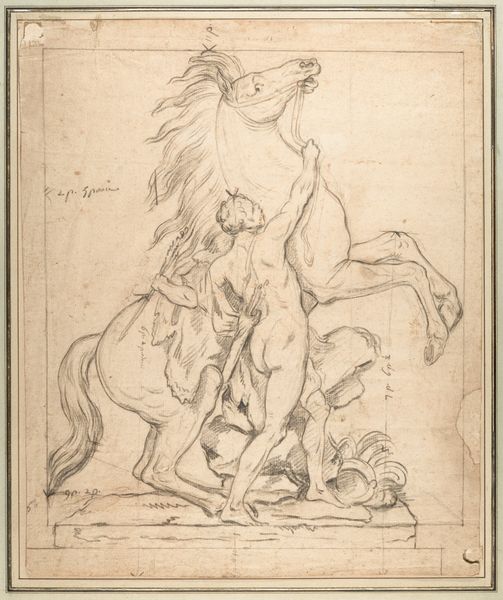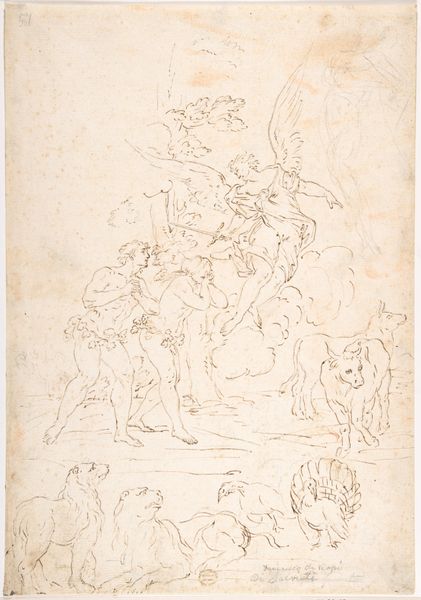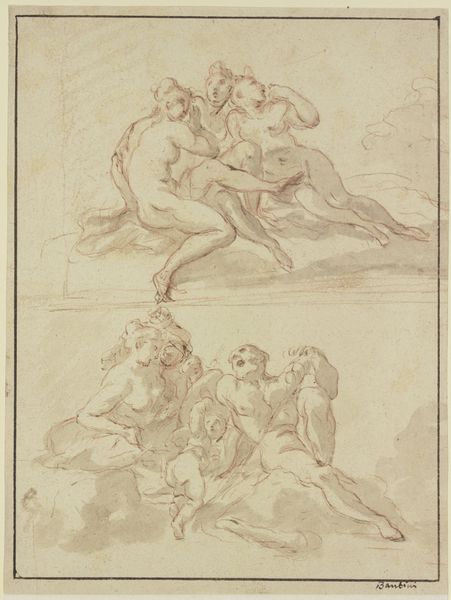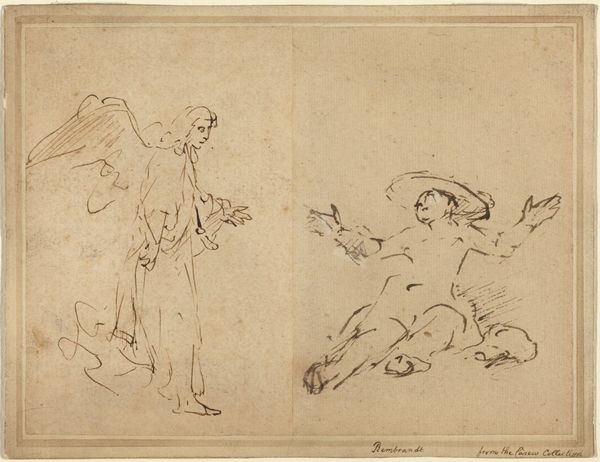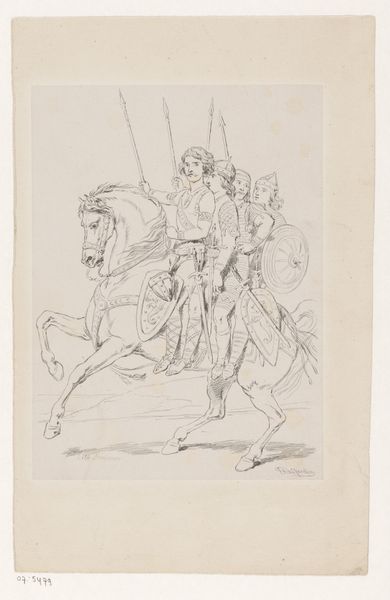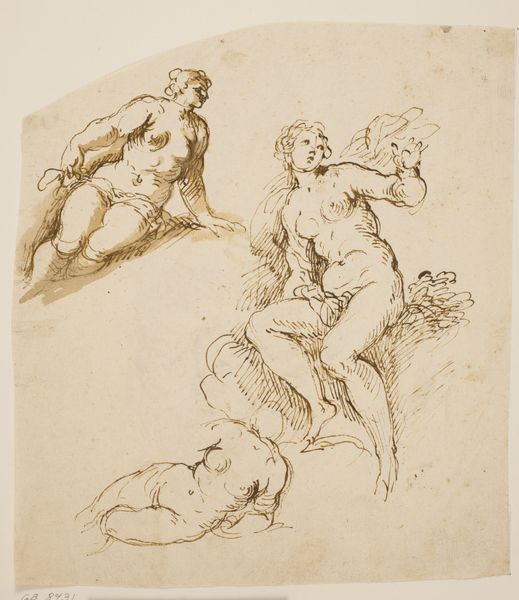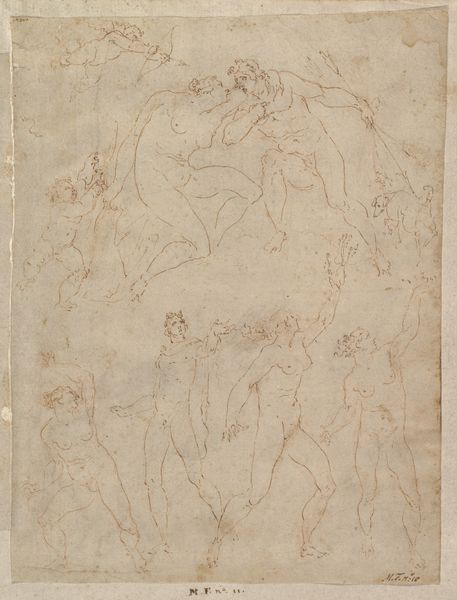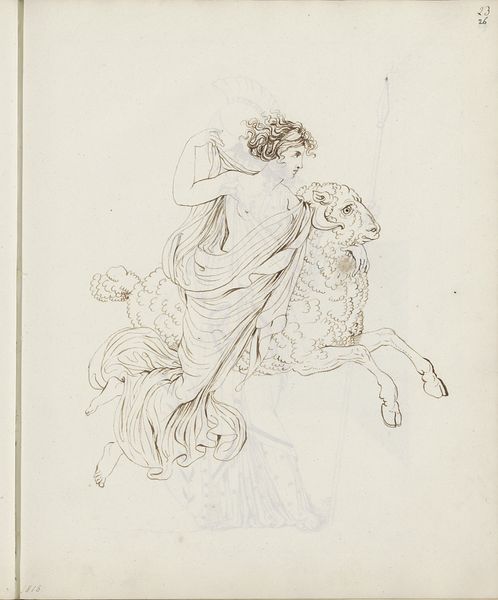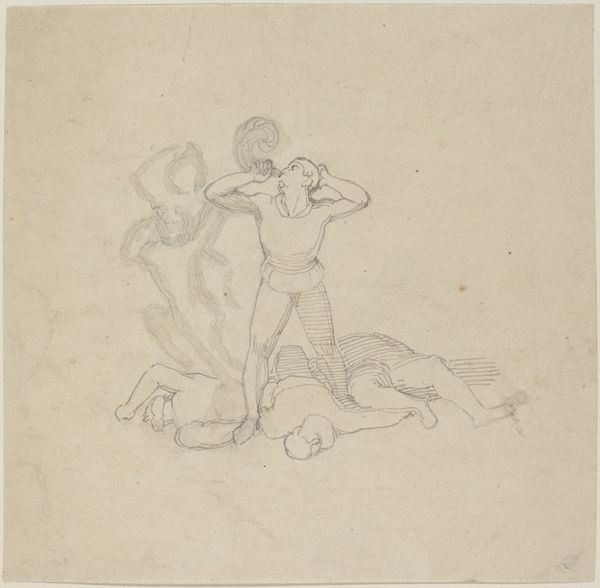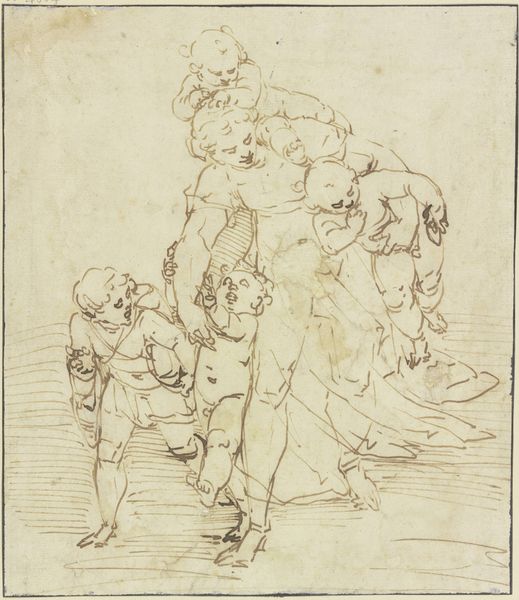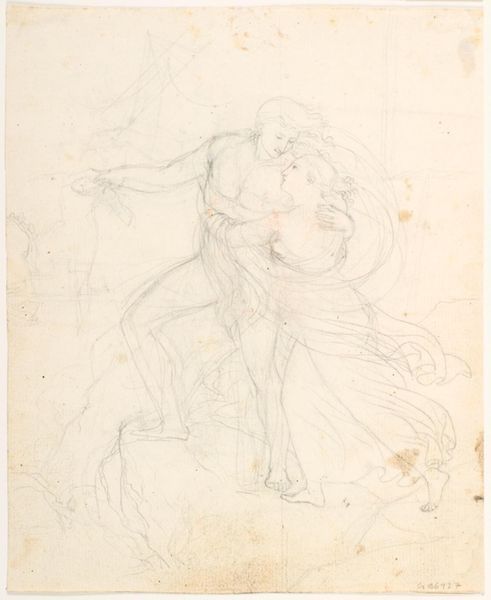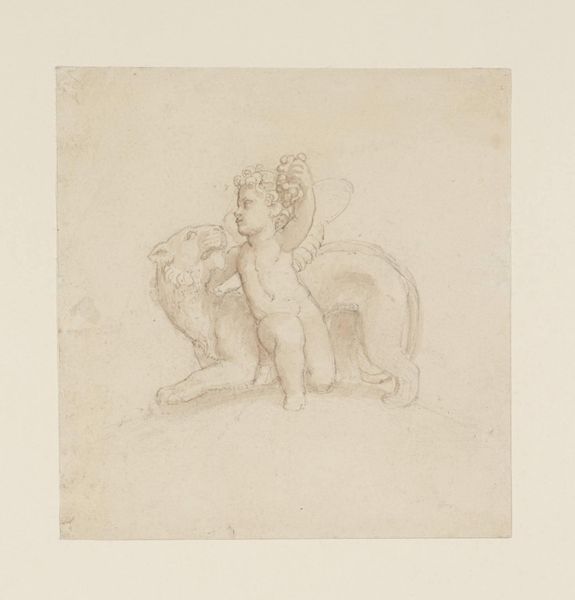
Tavle med tre amoriner og derunder amor på en løve 1765 - 1833
0:00
0:00
drawing, print, pencil, engraving
#
drawing
#
allegory
# print
#
pencil sketch
#
figuration
#
pencil
#
engraving
Dimensions: 220 mm (height) x 175 mm (width) (bladmaal)
Editor: This is Gerhard Ludvig Lahde’s “Tavle med tre amoriner og derunder amor på en løve,” a drawing and engraving from between 1765 and 1833. It feels almost like a study, a preliminary sketch perhaps. The lines are so delicate. What do you see in this piece? Curator: Immediately, I’m struck by the juxtaposition of tenderness and domination. Three cherubs embrace at the top, a cluster of innocence and affection. Below, a single winged Cupid dominates a lion, spear raised. Lahde evokes a familiar visual language of power through allegory. Editor: Power? It seems so… gentle. Curator: Consider the lion – traditionally a symbol of strength, courage, royalty. Here, it’s been tamed, a foundation for Cupid’s perceived dominance. Think about the emotional resonance embedded in the symbolism of these images. Cupid isn’t just riding the lion, he’s subduing raw power, almost neutralizing the threat. Doesn’t that impact your impression? Editor: Yes, I see what you mean. It's not just cherubs and lions, but ideas of control and maybe even vulnerability, depending on how you interpret it. Curator: Precisely! The image explores these opposing forces— tenderness and the subjugation of power. Lahde taps into something very primal, linking love and control, innocence and power. What do you take away from how the images converse across time? Editor: It’s interesting how a simple sketch can hold so many layers of meaning once you start unpacking the symbols. I definitely look at it differently now. Curator: Visual symbols form our language of cultural memory; deciphering them lets us find resonance within the history of human experiences.
Comments
No comments
Be the first to comment and join the conversation on the ultimate creative platform.

